
Advertisement
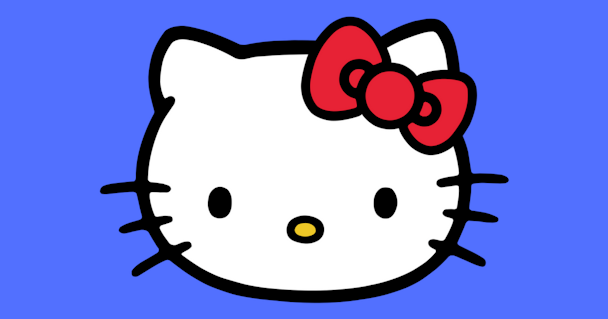
The soft, sparse outline of Hello Kitty was first sketched by Yuko Shimizu in 1974
The Drum's series looking into the weird and wonderful origins of some of the world’s best-known brands brings a deep dive into the colourful history of Hello Kitty, exploring how the button-eyed totemic character went on to become one of the most recognisable brands on the planet alongside McDonald’s and Coca-Cola.
The soft, sparse outline of Hello Kitty was first sketched by Yuko Shimizu in 1974. Having just graduated from Tokyo’s Musashino Art University, the young designer was working for Japanese toy giant Sanrio when she came up with Kitty's design. In the same year, the anthropomorphic, mouthless creation made her debut on a vinyl coin purse with a star-etched snap closure.
Fast forward 43 years and Hello Kitty is a brand worth an estimated $7bn for its parent company. The feline-like character’s curious, but broad appeal means Kitty’s image has been stamped (officially and unofficially) on everything from airlines to breast pumps, motor oil to microwaves, wedding dresses to Avril Lavigne videos. There’s even a Hello Kitty hospital in Taiwan, and she has her own TV show and YouTube channel.
At the last count, there were 50,000 Hello Kitty product lines available in over 130 countries. In recent years, Sanrio, which owns the rights to hundreds of other characters like the Mr Men and Little Miss collective, as well as egg-turned mascot, Gudetama, has inked deals with fashion brands like Puma and Asos to drum up interest in Hello Kitty in adult markets with a view to offsetting declining group turnover.
Sanrio’s own founding story is also unique and compelling. Its founder Shintaro Tsuji is affectionately known as ‘Mr Cute’ in Japan. He started the company – which originally sold silk products – in 1960 post-war Japan with the mission of building a business that would popularise gift giving in the country and “promote friendship”.
Hello Kitty’s global fame has been achieved with little investment in traditional advertising – her marketing machine instead powered by brand tie-ups and licensing deals, which have helped the character transcended its beginnings as a niche stationery design to become a globally recognised symbol.
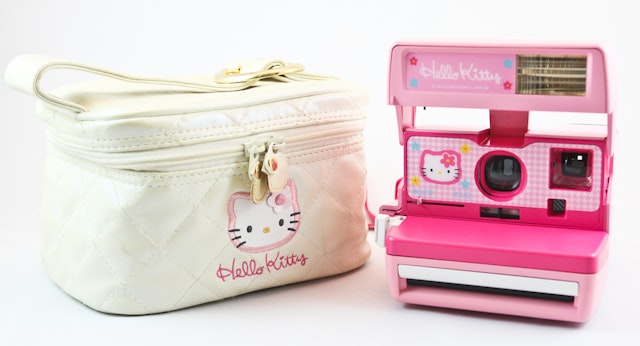
Martina Longueira, EMEA and Australia marketing lead for Hello Kitty at Sanrio, joined from Pentland Brands last year and tells The Drum that it’s important the Kitty evolves over time, while continuing to appeal to nostalgia.
“This isn’t tricky to balance because the fanbase is so diverse. People who grew up with her in the 70s and 80s are now in their 30s and 40s. This goes right through to younger adults, babies and children who love her today,” she says.
Adding that the brand sees Kitty’s appeal as “timeless”, she notes it’s important for the Japanese firm to adapt to different trends and technology to stay relevant.
“Experiential marketing, for example, is huge for Sanrio in Asia and has been for a long time. There is so much to be done in this space in Europe – people want to immerse themselves in unique experiences and Hello Kitty ones are up there,” she says.
Hello Kitty’s history is as kawaii (a Japanese term best translated as cute) and colourful as you’d expect.
In 1978, Sanrio began to distribute Hello Kitty products more widely across Europe and the US, later teaming up with brands like Polaroid and debuting the first digital watch featuring the motif – which sold over 1m units. The character has been a Unicef ambassador to the US since 1983, and to Japan since 1994.
In the 90s Sanrio opened up Puroland, an indoor funfair complete with rides, musicals and restaurants, and Hello Kitty was the star draw. Every year it’s estimated to attract around 1.5 million visitors through its gates.
To mark Hello Kitty’s 40th anniversary, the first official Hello Kitty Con opened its doors in California in 2014, giving over 25,000 fans the chance to experience exhibits, attractions, merchandise and activities to “celebrate” the occasion.
More recently Sanrio has collaborated with high street fashion and cosmetics brands like Asos, Topshop, Sephora and Lazy Oaf.
Last year throughout Europe Sanrio brought Hello Kitty licensing representation back in-house, taking power back from agencies. It also launched an influencer initiative dubbed the ‘Hello Kitty Gang’, which targets young adults, and a separate campaign – Hello Kitty Club – aimed at children.
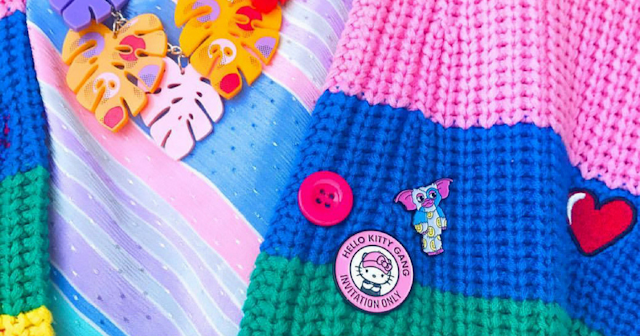
Hello Kitty Gang comprises a group of lifestyle, music, fashion and sport influencers who are fans of the character. They are invited to exclusive events and gifted unique produce in turn for sharing posts about the icon.
As for her political ambitions, these do not end at representing Japan at UN meetings – Sanrio has thrown the motif’s ring in the hat during the US presidential race twice.
In the 2016 race against Donald Trump and Hilary Clinton the company implored US customers to vote for “fun, friendship and happiness,” by electing Hello Kitty as president. The company sold t-shirts, a beverage koozie, a rosette and a trucker hat (sound familiar?) to support her bid.
While she may not be in the White House, part of the character’s enduring appeal among fans lies in her design and the backstory crafted by Sanrio, argues Longueira.
“The simple strokes that create her face are a huge part of her creative and commercial success,” she says, adding that Sanrio designers are “rigorously trained” at the company’s Tokya HQ to draw her.
Since her inception Kitty has worn a red bow (or other accessory) on her left ear, with the emblem having seamlessly weaved its way into a number of fashion and brand collaborations as a symbol of the character. The ribbon has adorned everything from the character Godzilla (to promote the monster’s anime film in Japan) to Fila t-shirts and Swarovski necklaces.
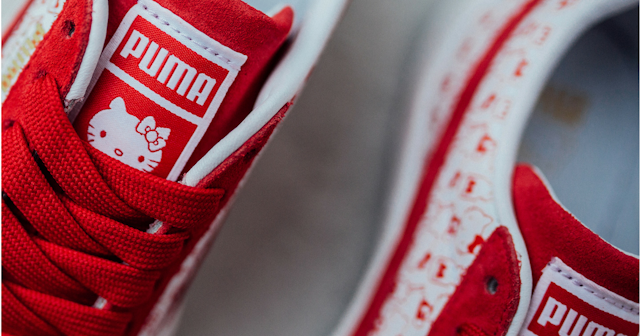
Kitty’s mouth is famously missing, which Longueira explains “is because she speaks from the heart,” allowing fans to project their own feelings on to Kitty.
Most curious about Kitty’s feline-like design is the fact she’s actually not a cat. Sanrio sent shockwaves around the world in 2014 when it clarified this point, but when asked to clear up any further misperceptions Longueira says: “This is something we find ourselves saying a lot – Hello Kitty is not a cat, although you could mistake her for one, she is a six-year-old girl born in London.
“Her full name is actually Kitty White, so she’s not technically a ‘kitty’. It doesn’t look like the cat confusion will be over anytime soon though…”
Kitty’s design has evolved over the years. In 1977, Sanrio adopted a standing pose for her, then in 1982 her thick black outline disappeared so she could be better blended into background scenes. She’s also been adapted for American audiences at various points in her lifecycle.
Upon launch, the motif was given a family of accompanying designs, each with their own personality.
Her ‘Papa’ George White is the “backbone of the family,” her ‘Mama’ Mary White is “famous for her apple pie”, while her twin sister Mimmy – who wears a yellow ribbon on her right ear – has “a talent for embroidery and patchwork”. She even has an on-off love interest in the form of Dear Daniel, who was introduced in 1999 as a sensitive Brit who “likes to take photos of animals”.
Just like her own candyfloss pink hues, Kitty’s own backstory is as sickly sweet as one might anticipate. Her weight and height are measured in apples (she’s three apples heavy and five apples tall) and she has two pets of her own – Charmmy Kitty (a cat) and Sugar (a hamster).
Longueira, who used to manage global tennis marketing and sponsorship at Ellesse following a four-year stint co-ordinating the London 2012 Olympics and Paralympics legacy programme internationally for UK Sport, says there are a lot of “high points” when it comes to being tasked with promoting the cult brand throughout EMEA, India and Oceania.
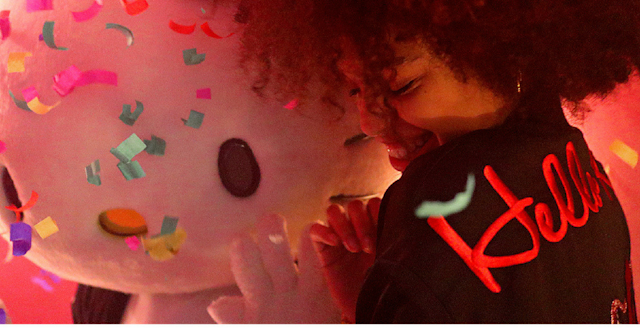
“With a character and brand like Hello Kitty, you can go down so many creative routes – the world is your oyster,” she enthuses. “Visually and conceptually, she works in all countries and virtually all categories. This is before you take into consideration how well-known and adored she is.”
She admits, however, that this can throw up challenges – especially in a digital world where people want to be able to buy products they see online wherever in the world they are, and Sanrio is unable to meet these demands in certain markets.
With Longueira admitting she has witnessed "backstage scrums" from fans looking to 'meet' Kitty at fashion shows, and seen "grown men giggle" when they've had their photo taken with her, it doesn't look like the character's lustre is about to fade any time soon.
Later this week, Kitty is poised to make an appearance at Milan Fashion Week to mark a collaboration with Italian brand Save My Bag, and with partnerships with Asos, Puma and more set to continue into the year it looks like Sanrio is finding new ways to ensure its 1974 creation keeps pace with pop culture.
More like this: The Drum Marketing Awards nominations will be announced on 13 April. The entry deadline has passed but you can apply for an extension now by contacting Pepe Terry.